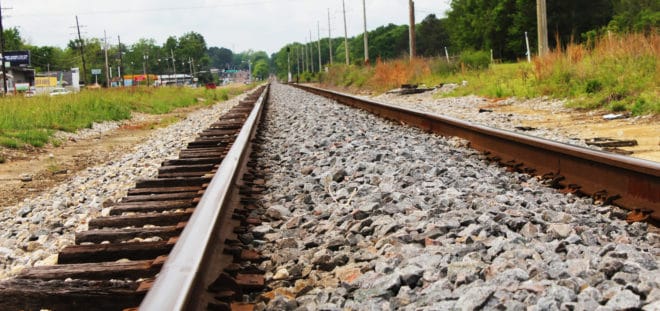JACKSON, MISS. – Last year, there were 34 crashes at railroad crossings in Mississippi, seven of which were fatalities. Most crashes at railroad crossings are preventable. On International Level Crossing Awareness Day, designated June 2 by the International Union of Railways, the Mississippi Department of Transportation (MDOT) is highlighting the importance of safety at railroad crossings around the state to prevent crashes and fatalities.
“MDOT plays a supporting role in railroads across Mississippi,” said MDOT Executive Director Melinda McGrath. “2,600 rail miles are supported through safety efforts at crossings by providing oversight in safety and traffic control on all public at-grade crossings.”
MDOT’s rails engineer inspects crossings each year to determine the need for lights and gates, creating a prioritization list. Using federal funding and guidelines, design and construction of lights and gates at crossings occur based on metrics such as sight distance, number of vehicles crossing, including the percentage of school buses and trucks, number of trains on the rail line, speed of the trains and whether they may be carrying hazardous materials.
MDOT works with cities and counties to offer guidance on other warning devices to increase safety at railroad crossings for the public. Last year, MDOT installed four sets of lights and gates at crossings in Bay St. Louis. One of the four crossings at South Toulme Street had six crashes between 2006 and 2014. There has not been a crash at these locations since the lights and gates were installed.
In Myrtle, MDOT installed lights and gates at two crossings in 2016. These crossings were located near the Myrtle Attendance Center and had crashes in 2013 and 2014, including one fatality. The new warning devices help provide a safer crossing for motorists and students walking or biking to school.
MDOT also works to separate state-maintained highways from railroads whenever possible. In May 2016, MDOT began a project to separate U.S. Highway 49 East from the rail line in the Bee Lake area of Holmes County. Crews are constructing a railroad overpass on U.S. Highway 49 East and a hydraulic bridge over Parkers Bayou to remove the threat of crashes at this crossing and to improve site lines of an important rural connector. This project is expected to be complete in late fall.
“While MDOT can make these crossings as safe as possible by adding appropriate warning devices and constructing overpasses, it is also the responsibility of motorists to make sure they know what to do at a railroad crossing,” McGrath said.
With safety as the number one priority, MDOT offers these tips for motorists, pedestrians and bicyclists on International Level Crossing Awareness Day and every day.
- Trains and cars don’t mix. Never race a train to the crossing.
- The train you see is closer and faster-moving than you think. If you see a train approaching, wait for it to go by before you proceed across the tracks.
- Trains cannot stop quickly. Even if the locomotive engineer sees you, a freight train moving at 55 miles per hour can take a mile or more to stop once the emergency brakes are applied.
- Never drive around lowered gates — it’s illegal and deadly.
- Do not get trapped on the tracks; proceed through a highway-rail grade crossing only if you are sure you can completely clear the crossing without stopping. Remember, the train is three feet wider than the tracks on both sides.
- If your vehicle ever stalls on a track with a train coming, get out immediately and move quickly away from the tracks in the direction from which the train is coming. If you run in the same direction the train is traveling, when the train hits your car you could be injured by flying debris. Call your local law enforcement agency for assistance.
- At a multiple track crossing waiting for a train to pass, watch out for a second train on the other tracks, approaching from either direction.
- When you need to cross train tracks, go to a designated crossing, look both ways, and cross the tracks quickly, without stopping. Remember it isn’t safe to stop closer than 15 feet from a rail.
- ALWAYS EXPECT A TRAIN! Freight trains do not follow set schedules.
- Call for help! Each crossing location has a sign with identification and phone numbers to call to alert the dispatch for the rail line of any crossing issues.
For more information about how MDOT supports rails in Mississippi, visit GoMDOT.com.




